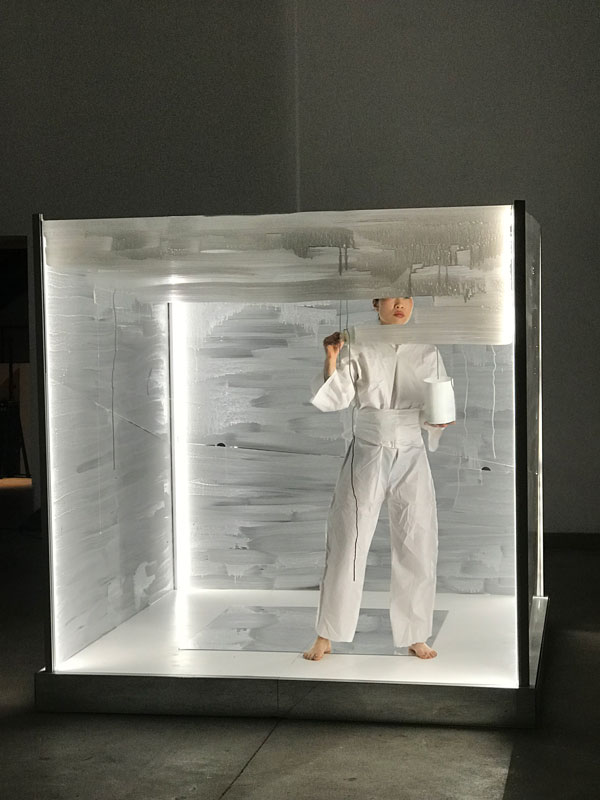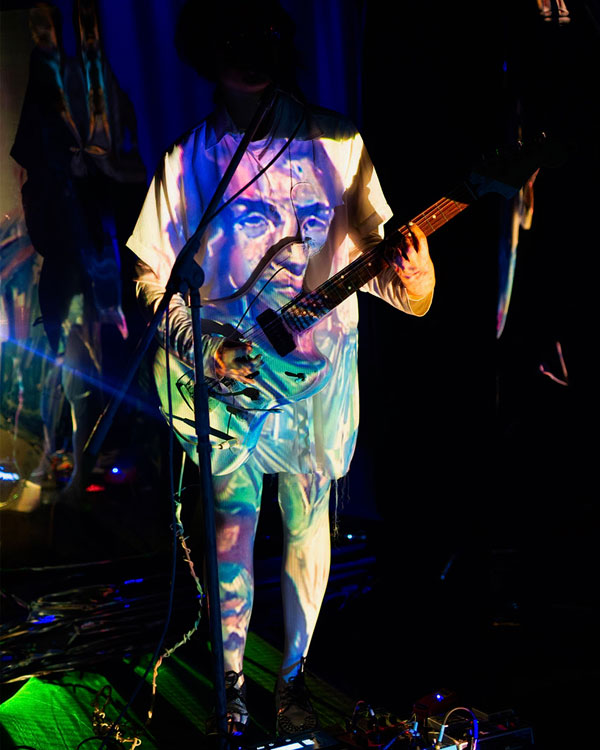If the art world is a microcosm of our society at large, then the performance stage presents a unique opportunity for artists to write or rewrite reality as they would prefer it to be. It’s undeniable that women continue to face a host of gender-specific difficulties, both in society and in art, whether it’s lack of representation, repression of agency, or objectification—not to mention such intersectional issues as age, race and sexual orientation.
It’s normal for performance artists of any gender to wrestle with identity and create work around that, but it’s arguably more complex for female-identifying artists, as women’s bodies have historically been wrapped up under the toxic influence of the male gaze, ownership and unethical power exchanges. When simply performing as a woman on stage, these are underlying factors, whether or not the artist’s work deals with those subjects explicitly.

Kim Ye, Casually Destroying the Patriarchy, photo documentation, durational performance, Los Angeles (2017).
Los Angeles–based performance artist Kim Ye addresses these patriarchal power dynamics in her work through a lens of BDSM and intimacy. In much of Ye’s work she situates herself as an educator for the audience, as many of her performances have a specific message that she enacts. In Taken Down (2018), Ye hired a cis white man to take down artwork exhibited in her group show. Audiences peep through holes cut into tarps blocking the entryways of the gallery to watch Ye instruct the man to get naked as she films him. Themes of intimacy and power are also in play in The Femme Gaze Fotobooth (2017) in which participants are instructed to pose in conjunction with Ye’s desires, and in Casually Destroying the Patriarchy (2018), in which Ye chips away at a giant wall of ice with stiletto heels. Ye fearlessly addresses sensitive subjects and successfully uses her medium to accurately lead viewers into territory that some would consider radical.

Kayla Tange, Defining Boundaries (December 2018), Human Resources. Photo: Kevin Kane
LA-based performance artist Kayla Tange also uses the aesthetics of BDSM to blur the lines of what has traditionally been considered performance art. In many ways both Ye and Tange are following in the footsteps of Sheree Rose, a still-active performance artist in LA who was groundbreaking in establishing sadomasochism as art. Tange, who also moonlights as a dancer under the moniker Coco Ono, confronts taboos and identity through performance, and unapologetically uses eroticism in much of her work. Tange’s latest piece, Boundaries (2018), reflects on identity, shame, and her own personal experiences as a Korean adoptee in a Japanese family. From the opening inquiry of “Tell me a way in which your boundaries were crossed,” Tange interweaves personal stories written by anonymous participants with dance, live music and multimedia elements.

Paige Emery, Projection (2018).
Performance artist Paige Emery similarly takes a multimedia approach, and her signature performance, Projection (2018) turns the typical musical act on its head. Emery paints self-portraits, both nude and clothed, that she then videotapes and projects onto her body and her masked face. “I aim to reject exclusivity and put paintings into a different context. I remove my ego as a performer by covering my face, and use the transforming projections of paintings as links to the transformation of my identity,” Emery says. A mirror behind her reflects the projections onto the audience, thus doubling her fractured identity onto the crowd.
In each of these performance artists’ searches for representation of self and dissection of identity, they reveal aspects about not only themselves, but also about the audience. Through a sense of catharsis, audience members have a chance to face issues that may at times be uncomfortable, and take both a figurative and literal look in the mirror.


